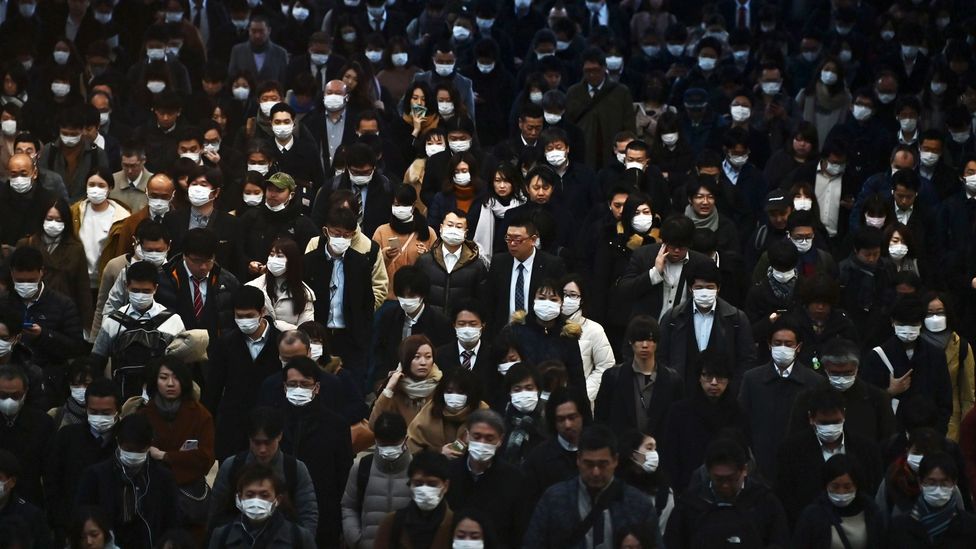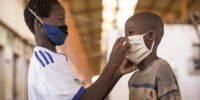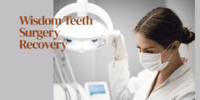How to Prevent the Spread of Viral Infections in Crowded Areas

This article aims to provide an informative overview of strategies to prevent the spread of viral infections in crowded areas.
The spread of viral infections poses significant public health concerns, particularly in densely populated settings. By understanding the nature of viral infections and implementing effective preventive measures, individuals can contribute to reducing the transmission of viruses in crowded environments.
This article discusses the importance of personal hygiene, such as handwashing techniques, adherence to social distancing measures, proper usage of face masks, maintenance of clean surfaces, promotion of good respiratory etiquette, and the significance of vaccination and immunization.
Key Takeaways
- Viral infections spread through respiratory droplets, direct contact, and contaminated surfaces.
- Proper handwashing practices and regular hand hygiene are crucial in crowded areas to prevent the spread of viral infections.
- Disinfecting surfaces regularly with appropriate disinfectants helps minimize the transmission of pathogens.
- Social distancing measures and proper mask usage are important in crowded areas to reduce the risk of droplet transmission.
Understanding Viral Infections
Understanding viral infections is crucial in developing effective strategies to prevent their spread in crowded areas. Viral transmission occurs through various routes, including respiratory droplets, direct contact with infected individuals, and contaminated surfaces.
Respiratory droplets are the primary mode of transmission for many respiratory viruses, such as influenza and coronavirus. These droplets can be expelled when an infected person coughs, sneezes, or talks, and can infect others in close proximity.
Direct contact with infected individuals, through activities like shaking hands or sharing personal items, can also facilitate transmission. Additionally, viral particles can survive on surfaces for varying lengths of time, and individuals can become infected by touching these surfaces and then touching their face.
Understanding these modes of transmission is essential in designing and implementing effective prevention methods, such as hand hygiene, respiratory etiquette, physical distancing, and surface disinfection. By targeting these routes of transmission, the spread of viral infections in crowded areas can be minimized.
Importance of Personal Hygiene
Personal hygiene plays a crucial role in preventing the spread of infections and diseases. One of the most effective ways to maintain personal hygiene is through proper handwashing practices. Handwashing not only saves lives but also helps in reducing the transmission of various pathogens.
Furthermore, the significance of germ-free surfaces cannot be overlooked, as they contribute to the overall cleanliness and hygiene of a given environment, minimizing the risk of infections and diseases.
Handwashing Saves Lives
Research has consistently shown that regular handwashing with soap and water is a highly effective measure in preventing the spread of viral infections in crowded areas. Hand hygiene plays a crucial role in disease prevention by removing pathogens from the hands and reducing the risk of transmission. The effectiveness of handwashing in reducing the transmission of viruses has been demonstrated in various studies.
- Handwashing with soap and water can significantly reduce the risk of respiratory infections.
- Hand hygiene is particularly important in crowded areas where the transmission of viruses is more likely to occur.
- Proper handwashing techniques, including thorough rubbing and rinsing, are essential for effective hand hygiene.
Promoting and practicing regular handwashing with soap and water is essential for preventing the spread of viral infections in crowded areas. By adhering to proper hand hygiene practices, individuals can contribute to maintaining a healthier environment and reducing the risk of disease transmission.
Germ-Free Surfaces Matter
Germ-free surfaces play a significant role in minimizing the transmission of pathogens in high-traffic environments. In crowded areas, where individuals come into contact with various surfaces, implementing effective disinfecting methods is crucial.
Disinfecting surfaces regularly with appropriate disinfectants can help eliminate or reduce the viability of pathogens. It is important to follow proper hygiene practices to ensure the effectiveness of disinfection. This includes using disinfectants that are approved for use against specific pathogens, following manufacturer’s instructions for proper dilution and contact time, and using personal protective equipment when handling disinfectants.
Additionally, promoting awareness and education about the importance of germ-free surfaces and proper disinfecting methods can encourage individuals to adopt these practices and contribute to the prevention of the spread of viral infections in crowded areas.
Effective Handwashing Techniques
This section will discuss the effectiveness of soap versus hand sanitizer as part of proper handwashing techniques. The debate between soap and hand sanitizer revolves around their ability to remove and kill germs effectively.
Additionally, the importance of proper drying techniques will be addressed. Proper drying techniques, such as using clean towels or air drying, play a crucial role in preventing the recontamination of hands.
Soap Versus Sanitizer?
Comparison of the effectiveness of soap and sanitizer in preventing the spread of viral infections in crowded areas has been a topic of interest in public health. While hand sanitizers are commonly used as an alternative to soap in situations where handwashing facilities are not readily available, their efficacy in eliminating viral pathogens is still a subject of debate.
Hand hygiene techniques, such as proper handwashing with soap and water for at least 20 seconds, have been proven to be effective in reducing the transmission of viruses. Soap works by breaking down the lipid envelope of the virus, rendering it inactive.
On the other hand, hand sanitizers, particularly those containing at least 60% alcohol, can also be effective in killing most types of viruses on the skin. However, it is important to note that hand sanitizers may not be as effective when hands are visibly dirty or greasy.
Thus, the choice between soap and sanitizer depends on the specific situation and the condition of the hands.
Proper Drying Techniques
Proper drying techniques play a crucial role in maintaining hand hygiene and reducing the risk of contamination. After proper handwashing, it is important to dry hands thoroughly to eliminate any remaining moisture that may harbor bacteria or viruses.
Air drying is a recommended method for hand drying as it does not require direct contact with surfaces that may be contaminated. This method allows for natural evaporation of moisture from the hands, ensuring that they are completely dry.
Additionally, air drying eliminates the need for paper towels or cloth towels that may become contaminated and contribute to the spread of pathogens.
Proper handwashing followed by thorough air drying is an effective strategy in preventing the spread of viral infections in crowded areas.
Social Distancing Measures
One effective measure to mitigate the spread of viral infections in crowded areas is the implementation of social distancing measures. Social distancing aims to reduce close contact between individuals, thereby minimizing the risk of droplet transmission.
This can be achieved through various strategies, including:
- Physical barriers: Installing transparent shields or screens between individuals can provide a physical barrier that helps prevent the direct spread of respiratory droplets.
- Crowd management: Implementing crowd control measures, such as limiting the number of people in a given space or implementing one-way flow systems, can help maintain physical distancing and reduce the likelihood of viral transmission.
- Public awareness campaigns: Raising awareness about the importance of social distancing and its role in preventing the spread of viral infections can evoke a sense of responsibility and encourage compliance with these measures.
Wearing Face Masks Properly
Wearing face masks correctly is essential in reducing the risk of transmission of respiratory droplets and maintaining public health and safety. Face masks act as a physical barrier, preventing respiratory droplets from being released into the air and potentially infecting others. To maximize their effectiveness, it is important to follow mask wearing guidelines. These guidelines include wearing masks that cover both the nose and mouth, ensuring a snug fit without gaps, and avoiding touching the mask while wearing it. Additionally, proper mask hygiene should be practiced, such as washing reusable masks regularly and disposing of single-use masks properly. Adhering to these guidelines can help minimize the spread of viral infections in crowded areas.
| Face Mask Effectiveness | Mask Wearing Guidelines |
|---|---|
| Acts as a barrier for respiratory droplets | Cover both nose and mouth |
| Reduces the risk of transmission | Ensure a snug fit without gaps |
| Maintains public health and safety | Avoid touching the mask while wearing |
| Promotes infection control in crowded areas | Practice proper mask hygiene |
Maintaining Clean and Sanitized Surfaces
To ensure a clean and sanitized environment, it is important to regularly clean and disinfect surfaces that are frequently touched by multiple individuals. Cleaning products and disinfection methods are essential in preventing the spread of viral infections in crowded areas.
Cleaning products such as disinfectant sprays, wipes, and solutions containing alcohol or bleach can effectively eliminate viruses from surfaces. Additionally, using electrostatic sprayers or UV-C light devices can provide a more thorough and efficient disinfection process.
It is crucial to follow proper cleaning protocols, including wearing personal protective equipment, using appropriate dilution ratios, and allowing sufficient contact time for the disinfectant to work effectively.
Regular cleaning and disinfection of surfaces can greatly reduce the risk of viral transmission and contribute to maintaining a safe and hygienic environment in crowded areas.
Promoting Good Respiratory Etiquette
Implementing and promoting good respiratory etiquette practices, such as covering one’s mouth and nose with a tissue or the crook of one’s elbow when coughing or sneezing, can help minimize the release of respiratory droplets into the air.
Respiratory etiquette awareness is crucial in preventing the spread of viral infections in public spaces. It is essential for individuals to understand the importance of practicing respiratory etiquette in order to protect themselves and others from respiratory illnesses.
By covering their mouth and nose when coughing or sneezing, individuals can reduce the risk of infecting others with respiratory droplets containing viruses. This preventive measure is particularly important in crowded areas where people are in close proximity to one another.
Additionally, promoting respiratory etiquette through public health campaigns and educational initiatives can further enhance awareness and encourage individuals to adopt these practices in their daily lives.
Encouraging Vaccination and Immunization
Encouraging vaccination and immunization is a crucial public health strategy in preventing the transmission and severity of infectious diseases. Vaccines have been proven to be effective in reducing the risk of infection and complications associated with various viral diseases.
However, vaccine hesitancy poses a significant challenge in achieving high vaccination coverage. Vaccine hesitancy refers to the reluctance or refusal to be vaccinated despite the availability of vaccines. This hesitancy can be influenced by various factors, such as misinformation, mistrust, and religious or philosophical beliefs.
To address vaccine hesitancy, public health campaigns should focus on providing accurate and evidence-based information about vaccines, their safety, and the importance of immunization. Achieving high vaccination rates is essential for achieving herd immunity, which occurs when a significant proportion of the population is immune to a disease, thereby reducing its transmission.
Herd immunity not only protects individuals who are unable to receive vaccines due to medical reasons but also helps prevent outbreaks and protect vulnerable populations.
Frequently Asked Questions
How Long Do Viral Infections Typically Last?
The duration of viral infections varies depending on the specific virus and individual factors. Long-term effects can occur in some cases. Treatment options for viral infections focus on symptom management and supportive care.
Can Viral Infections Be Transmitted Through Food or Water?
Viral infections can be transmitted through food or water, posing a risk to public health. Prevention measures should focus on ensuring the safety and hygiene of food and water sources to minimize the transmission of viral infections through these routes.
Is It Safe to Use Public Transportation During a Viral Outbreak?
Public transportation alternatives and precautions for using public transportation during a viral outbreak should be considered. The safety of using public transportation during a viral outbreak depends on various factors such as the level of transmission in the community and the effectiveness of preventive measures implemented.
How Effective Are Hand Sanitizers in Preventing the Spread of Viral Infections?
The effectiveness of hand sanitizers in preventing the spread of viral infections is a topic of interest. It is important to explore alternative methods as well, in order to develop comprehensive strategies for reducing transmission in crowded areas.
What Are the Common Symptoms of Viral Infections?
Common symptoms of viral infections include fever, cough, sore throat, runny nose, and body aches. Prevention measures for viral infections involve practicing good hygiene, such as handwashing, avoiding close contact with infected individuals, and covering the mouth and nose when coughing or sneezing.








